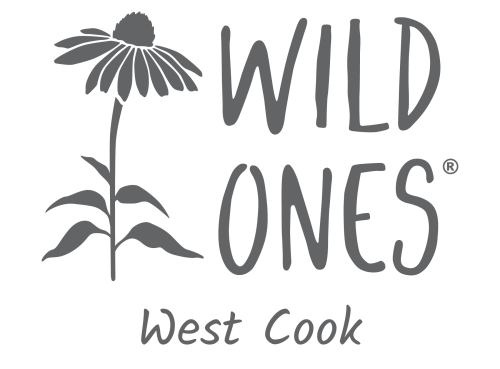Deer Resistant Plants
Looking for a list of plants deer avoid? We’ve done some research and compiled a list below sorted by sun requirements. To assemble the list, we cross-referenced from different sources that report these native plants as being deer resistant. Sources include personal experiences from prairie restorationists (Rita McCabe from Save the Prairie Society), an established plant nurseries like Prairie Moon Nursery and Prairie Nursery , as well as organizations such as Lady Bird Johnson Wildflower Centers Special Collections and Morton Arboretum’s list.
Unless noted, soil conditions are assumed to be typical garden soils here in the Chicago area comprised mostly of clay/loam which tend to hold onto moisture but still drain. Plants in the full sun group can generally take part sun too, and those in the shade group can likewise take part sun. To determine correct plants for your site, further research should be done. Many of our sources warn that hungry deer in the spring are less discriminate about their meals then. Just as a note, not all deer resistant plants are rabbit resistant.Let us know if you have a plant that deer seem to avoid in your garden, and its not listed here. Well add it.
Full Sun Plants
| Plant name | Bloom time | Height in feet | Special notes |
| Monarda species | Summer | 3-4’ | Hummingbird/Bumblebees |
| Rudbeckia spp | Summer/Fall | 2-3’ depending on species | Butterfly host plant |
| Asclepias spp | Summer | 2-4 depending on species | Monarchs |
| Solidago spp | Fall | 2-5 depending on species | Provides for many insects |
| Coreopsis spp | Summer | 2 | |
| Filependula rubra | Summer | 4with spires | |
| Echinacea spp | Summer | 3-4 | Butterfly host plant |
| Eupatorium spp | Summer/Fall | 3-5 depending on species | |
| Artemesia | Fallflowers generally inconsequentialfoliage is silvery gray | 3 | Butterfly host plant |
| Allium spp | Summer | 12 | Some species provide early nectar |
| Liatris spp | Summer | 2-5 depending on species | |
| Ruellia | Summer | 1-2 | May feed Buckeye butterfly caterpillar |
| Amorpha spp | Summer | 2-3 | Butterfly host plant |
| Asters spp | Fall | varies; you can prune | Butterfly host plant |
| Eryngium yuccifolium | Summer | 3-4 | |
| Vernonia spp | Summer/Early Fall | 4-5 | |
| Parthenium integrifolium | Summer (long bloom time!) | 2-3 | Great pollinator plant |
| Agastache spp | Summer 3-4 | 3-4 depends on species | Great pollinator plant; seeds for birds |
| Baptisia spp | Spring | 1-3 depending on species | Butterfly host plant |
| Senna hebecarpa | Summer | 4-5 can be pruned | Butterfly host and great pollinator plant |
| Pycantheum spp | Summer | 2-3 | Great pollinator plants |
| Euphorbia corollata | Summer | 2-3 | |
| Hypericum spp | Summer | 2-4 tall depending on species | Amazing pollinator plants |
| Dalea purpurea | Summer | 2 |
Part Sun
| Plant name | Bloom time | Height in feet | Special Notes |
| Anemone candanesis(grows in shade too) | Late spring | 1 | adaptable, aggressive, good for groundcover |
| Shooting Star | Spring | 1-2 | |
| Gentian spp | Fall | 2 | |
| Solidago spp | Fall | 2-5 depends on species | |
| Phlox divaricata | Spring/Summer | 1 | |
| Helianthus strumosus | Summer/Fall | 3-5 | |
| Penstemon digitalis | Summer | 3 | |
| Eupatorium maculatum | Summer | 3-4 | |
| Zizea aurea | Spring | 2 | Black swallowtail host plant |
| Ceanothus americanus | Summer | 3 | Hosts azure butterflies, duskywing |
| Asters spp | Summer-Fall | varies | Pearl Crescent butterfly |
| Campanula spp | Summer | 2 | |
| Verbena spp | Summer | 4 | |
| Chamaecrista fasciculata | Summer | 2 | Great pollinator plant; hosts sulphur butterflies |
| Lobelia sp | Summer | 3-4 | Hummingbirds |
| Helenium autumnale | Fall | 3-4 | |
| Physostygia virginia | Summer | 3-4 | Can be aggressive, hummingbirds |
| Iris virginica | Spring 3 | 2-3 | Moist soil |
| Pedicularis canadensis | Spring | 1 |
Shade
| Plant name | Bloom time | Height in feet | Soil |
| Sanguinaria canadensis | Spring | max 12” | |
| Tiarella cordifolia | Spring | | |
| Solidago (Elm-leaved Goldenrod, Zig-zag Goldenrod are a couple examples that will take shade) | Fall | varies | |
| Polemonium reptans | Spring | 1-2 | |
| Asters spp | varies | ||
| Actea spp | Spring flowers and berries in fall | 1-3 | |
| Cimicfuga racemosa | Summer | 5’ when in bloom | |
| Asarum canadense | Spring, interesting flowers | Ground cover | |
| Arisaema triphyllum | Spring, interesting flower and berries late summer | 1-2 | |
| Geranium maculatum (can handle range of light conditions) | Spring | 1-2 |
